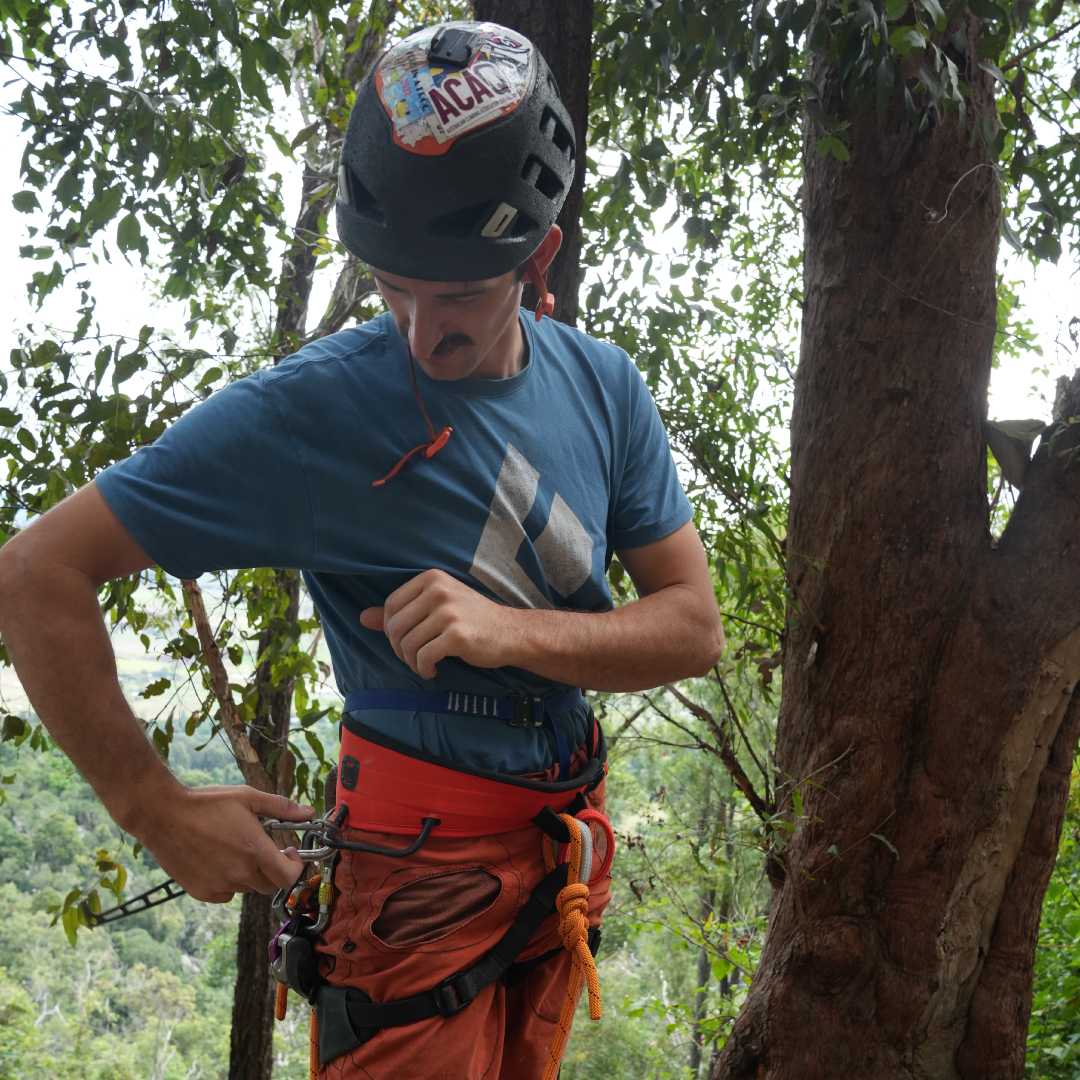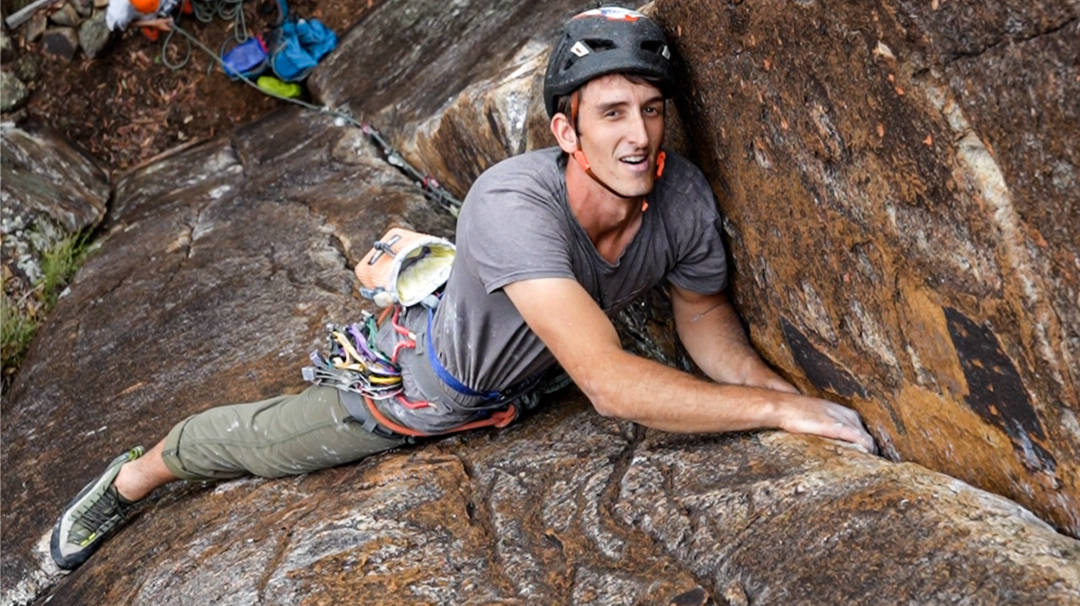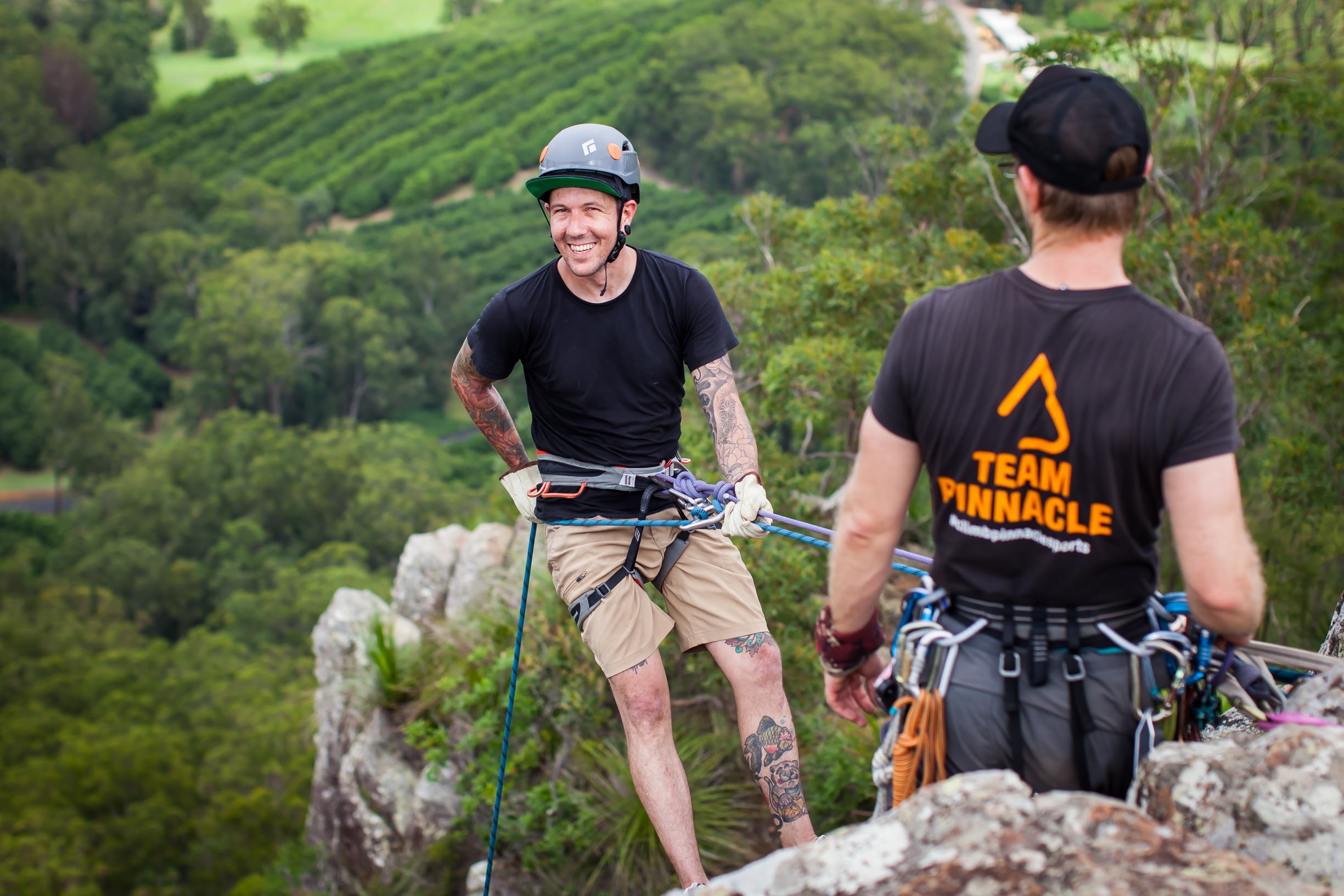
Written by Pinnacle Ambassador Kyle Addy
Gear addiction, healthy or unhealthy? I’ll leave that for you to decide.
Thinking back on it, I’ve always liked gear. As a carpenter by trade, I was a big tool nerd and wanted to be organised. I think if you’re invested in your kit, it allows you to do your job more efficiently, often with less frustration. I’ve continued this mentality working as a firefighter because when sh#t hits the fan, you better have confidence in your kit.
Moral of the story, if you do your best to manage the variables you can control you can give more attention to those you can’t. With climbing, everything organisationally leading up to pulling onto the wall is all in your control. That can be, the right gear, racked the right way for the task ahead. We’ve come a long way since swami belts and a gear sling of hexes, but unlike shoes, your harness won’t directly help you climb harder. However, being more organised will help you climb more efficiently and being more comfortable will help you enjoy a day out on the rock.
The purpose of this article isn’t to advertise a single product but rather to express my experiences and opinions to provide you with considerations for when you purchase your next harness. In saying that, I’m aware that not everyone pursues climbing the way I do; Trad, Sport, multi-pitch, rope solo, aid, anything that doesn’t involve snow or ice. The harness I’ve been running for the past few months is the successor to the Big Gun, the Black Diamond Long Haul.
The Black Diamond Long Haul has fixed the issues of the Big Gun and consequently, the reasons why I hated the Big Gun for my everyday harness. Overall, the harness feels less cumbersome with slimmer belay loops with no stitching seam. Quick-release buckles on the waist and leg loops are great additions, but by far the best improvement is the gear loop's position and design. The Big Gun has three loops with the third above the second and could fit seven carabiners on each. This design of gear on top of gear really hindered free climbing and was my primary turn off as my all-round harness. The Long Haul has two loops on each side that fit eleven to twelve carabiners on each and features a usable position for the ice screw biner mount, which is a great hack for carrot plates.
Gear loops are a crucial component in trad climbing. It’s not uncommon for trad climbers to carry a triple rack or more for a long pitch. Considering a single rack set of cams consists of ten pieces from #0-#3, the real-estate around your waist is taken up quite quickly. The DMM Renegade is an example of a harness that has seven gear loops but can’t fit any more gear than if it had five. The Wild Country Session is a reasonable light weight, compact harness and can fit ten biners at a squeeze on one of its two gear loops on each side. I ran this harness for a year, but it was a little uncomfortable and even though it could hold the gear well, the soft gear loops started to fray which is a huge worry. The hard fixed gear loops of the Long Haul provide durability for dragging through wide cracks and scraping against corners. These are also nice for pressing carabiners against to clip to the gear loops, reducing the risk of losing a rack mid multi.
.jpg)
Durability is an important factor for many when buying a harness. One of my favourite harnesses the Arc’teryx AR is a very light, no padding design which still feels very comfortable and holds gear very well with hard gear loops. I’ve owned two of these harnesses, but unfortunately the belay loops began to fray after a year on each harness. I briefly tried the Mammut Sender but I quickly found it was uncomfortable and was unable to support the weight of a rack. Obviously having an advertised aid climbing harness is a bit excessive for single pitch sport climbing. That said, comfort can sometimes be compromised when chasing light weight gear. Belaying friends working hard routes or sitting in a hanging belay, can get uncomfortable in a light sport harness.

One fault in comfort in the Long Haul I’ve found is the legs loops are quite stiff. When belaying the harness is weighted in a straight standing position, the leg loops slide up and dig in the top back of the thigh. I haven’t found this a huge issue. When the rope is weighted just sit back and let the padding do the job.
The past couple of years I’ve been getting into rope soloing. Glossing over this topic, lead rope soloing usually consists of leading, rappelling and seconding a fixed line all while being totally self-reliant. Sometimes this requires carrying more gear to make belays that are multi-direction, carrying more protection climbing and carrying gear to self-rescue. Rope soloing requires harnesses to be adaptable to an individual’s setup. Top rope soloing, climbing on a fixed line is also becoming increasingly popular. The ability to hang on a rope and self-belay while climbing, falling, brushing, and contemplating, has become a great way for people to work routes. Having a comfortable harness is increasingly important to stay up on routes for an extended period of time.
To conclude, I can't stress enough that it’s so important to pick the right tool for what you want to do, it also comes down to what you find to be a necessity or a nicessity. Durability, weight, racking space, comfort, applications, everyone approaches climbing slightly differently. Stay safe out there people



.jpg)





